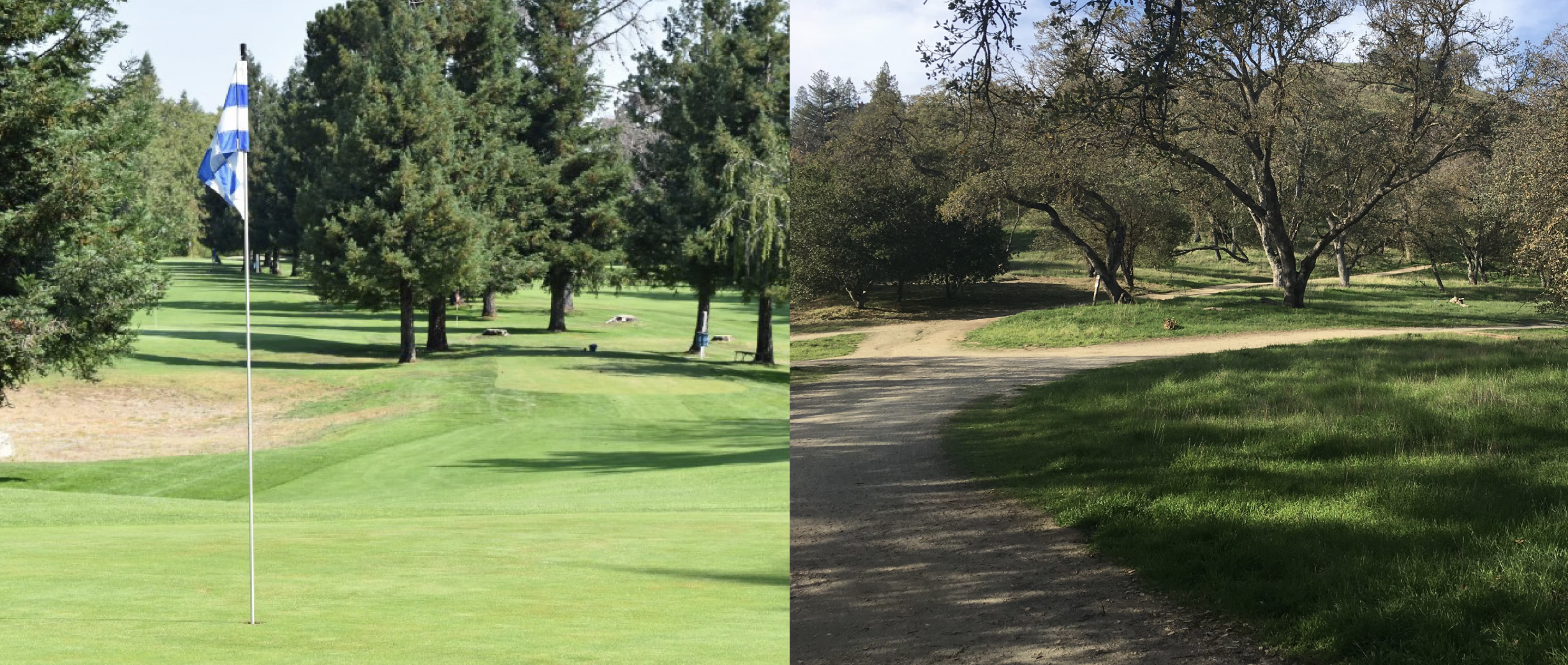Attend an Open House to Help Restore Cupertino’s Blackberry Farm Golf Course to Nature! Take a short survey!
We previously told you about Cupertino’s consideration of restoring the Blackberry Farm Golf Course site to natural habitat (the other option is making repairs and maintaining the golf course). This property is near the Santa Clara Valley Audubon Society (SCVAS) and adjacent to McClellan Ranch Preserve, Stevens Creek, and the Stevens Creek Corridor Trail.
The City is holding two open houses at the golf course. Attend and express to City staff your preference for the conversion to natural habitat. Ask staff to describe their draft plan for the restoration. You can tour the site on your own or attend a group tour.
Saturday, June 11, 6:00–8:00 pm (group tour at 6:30 pm)
Monday, July 11, 4:00–6:00 pm (group tour at 4:30 pm)
If you haven’t already, please respond to this short survey and ask Cupertino to Restore the land to its natural habitat.
Reasons for restoring nature:
Option A: Golf Course Minor Repairs and Improvements
The Golf Course will use much more water in a time of growing drought than the natural habitat (irrigation water demand for natural habitat will be less than 10% of that for the Golf Course)
It currently costs $500,000 a year to maintain a large area for a relatively few residents. Repairs will reduce this subsidy, but not eliminate it.
The overall grass used for playing golf is a “food desert” for wildlife.
Option B: Conversion to Natural Habitat
The restored natural area will use less water than the golf course, especially after the first 3-8 years of irrigation to establish the trees and plants.
This will be a place to plant native trees, shrubs and grasses which provide habitat for birds and other species, and support biodiversity as recommended in Cupertino's Climate Action Plan.
There are grants available that will reduce the amount of City funding required for maintaining natural habitat.
The restored area will provide a more inclusive space for recreation rather than an exclusive place just for paid customers.
Children need to learn about nature first hand. Many popular outings and courses at Santa Clara Valley Audubon Society at McClellan Ranch grew during the pandemic, and will continue to grow.
Our region is becoming more urban. We must restore a piece of wildness for wildlife, our children, and the future of our environment.





